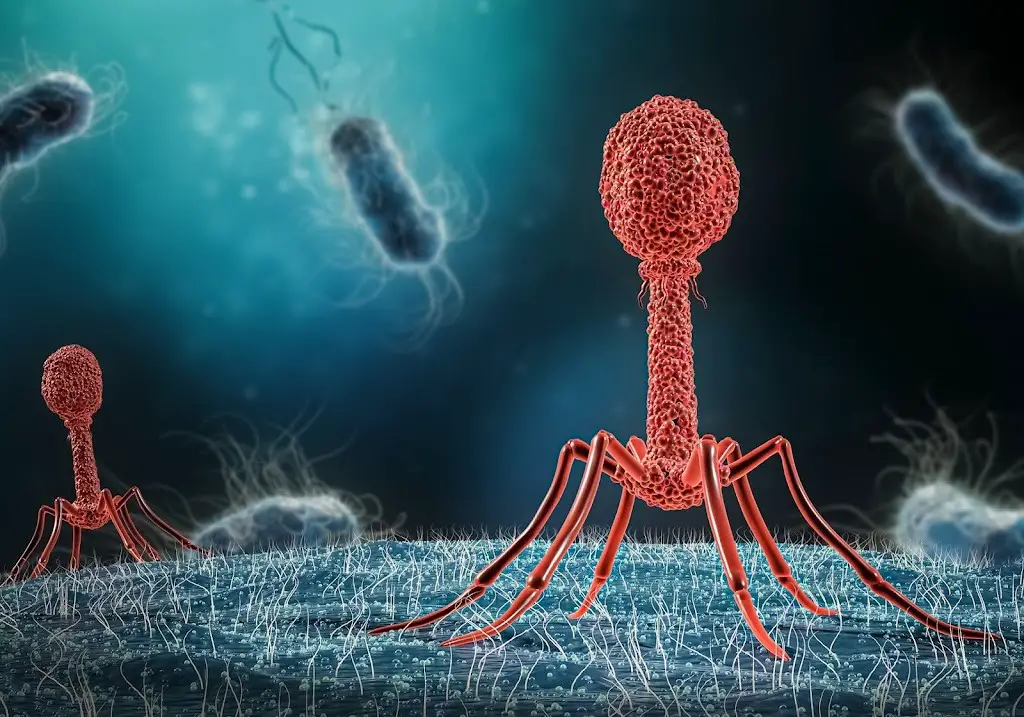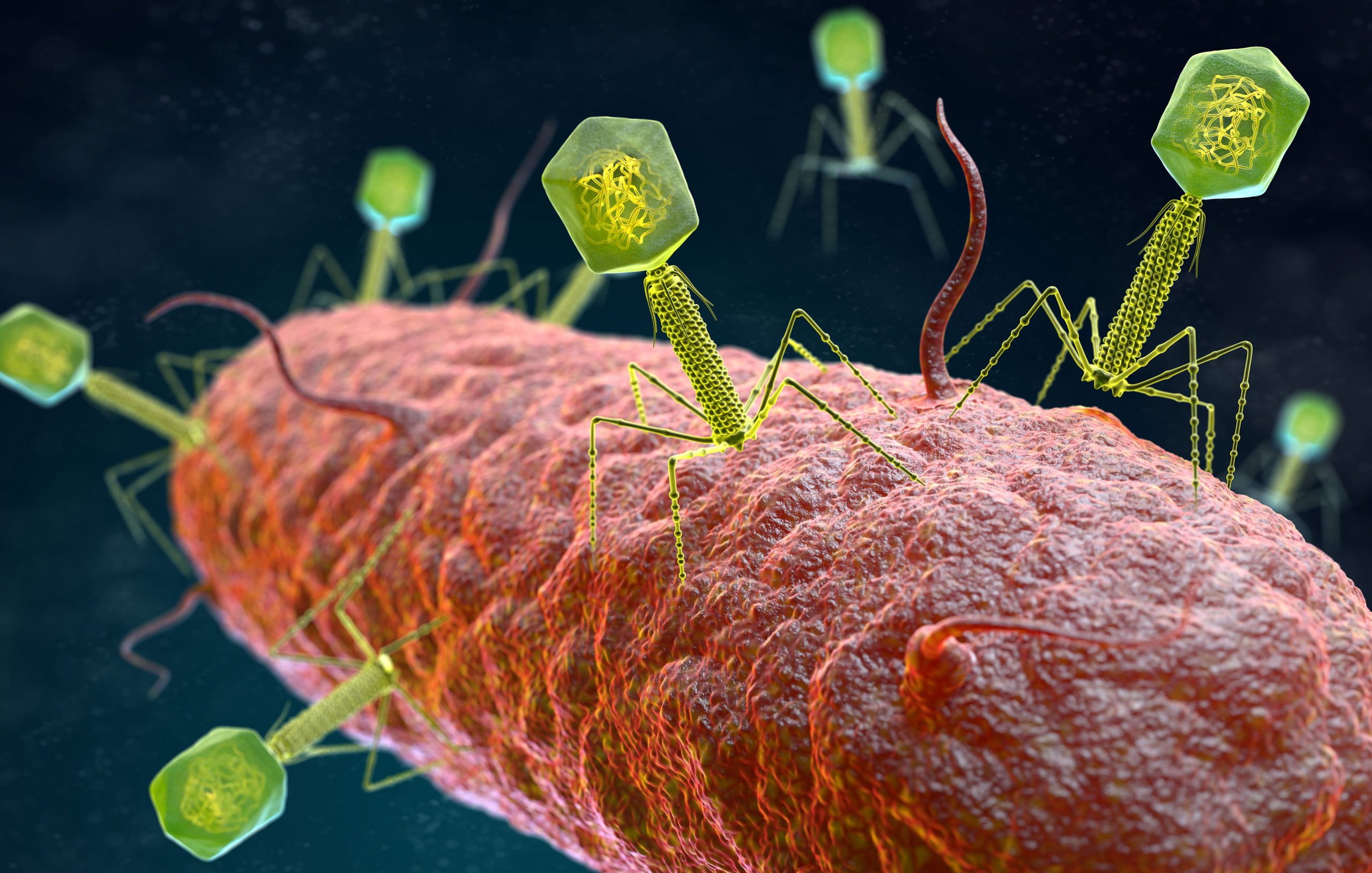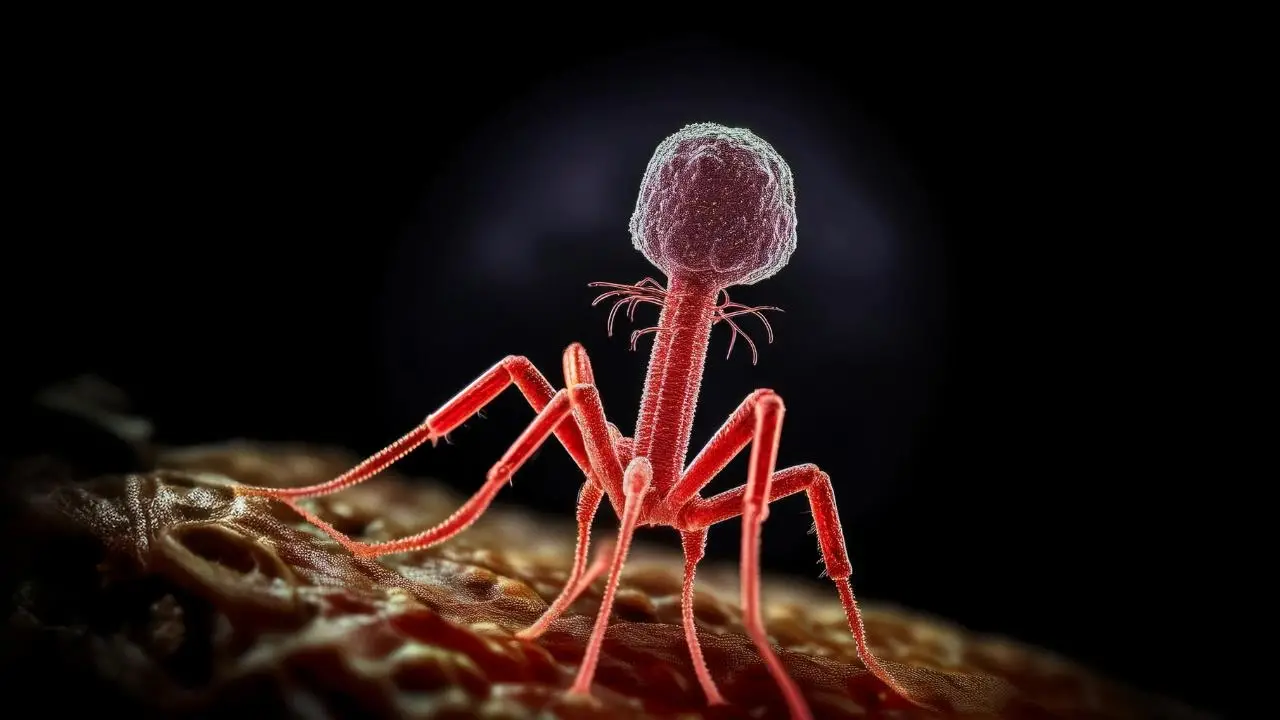
What is phage transduction?
Bacteriophage transduction is the process by which a bacteriophage shuttles or transfers bacterial genes from one bacterial cell to another. The cell whose genome segment is being shuttled is known as the donor cell, and the cell receiving it is known as the recipient cell. The transducing phage is the bacteriophage that transfers the bacterial segment. The transduction can be generalized or specialized. Among the genes that bacteria can acquire from phages via transduction are virulence and antibiotic resistance genes.

How was transduction discovered?
In 1951, Joshua Lederberg and Norton Zinder were testing for recombination in the bacterium Salmonella typhimurium by using the techniques that had been successful with E. coli. The researchers used two different strains: one was the− trp− tyr−, and the other was met− his−. No wild-type cells were observed when either strain was plated on a minimal medium. However, after the two strains were mixed, wild-type cells appeared at a frequency of about 1 in 105. Thus far, the situation seems similar to recombination in E. coli.
However, in this case, the researchers also recovered recombinants from a U-tube experiment, in which cell contact (conjugation) was prevented by a filter separating the two arms. By varying the size of the pores in the filter, they found that the agent responsible for recombination was about the size of the virus P22, a known temperate phage of Salmonella. Further studies supported the suggestion that the vector of recombination is indeed P22. The filterable agent and P22 are identical in size properties, sensitivity to antiserum, and immunity to hydrolytic enzymes. Thus, Lederberg and Zinder, instead of confirming conjugation in Salmonella, discovered a new type of gene transfer mediated by a virus. They called this process transduction. In the lytic cycle, some virus particles pick up bacterial genes that are transferred to another host, where the virus inserts its contents. Transduction has subsequently been shown to be quite common among both temperate and virulent phages.
Types of phage transduction
There are two kinds of transduction: generalized and specialized.
Generalized transducing phages can carry any part of the chromosome, whereas specialized transducing phages carry only restricted parts of the bacterial chromosome.
1. Generalized
In generalized transduction, the bacterial chromosome is broken into small pieces when a donor cell is lysed by bacteriophage virions. Occasionally, the forming phage particles mistakenly incorporate a portion of the bacterial DNA into a phage head in place of phage DNA. This event is the origin of the transducing phage.
Transducing phages can bind to a bacterial cell and inject their contents, which now happen to be bacterial donor genes. When a transducing phage injects its contents into a recipient cell, a merodiploid situation is created in which the transduced bacterial genes can be incorporated by recombination.
2. Specialized
Specialized transduction occurs during the lysogenic cycle. The recombination between phage regions and the bacterial chromosome is catalyzed by a specific enzyme system. This system typically ensures that the phage integrates at the same point in the chromosome. When the lytic cycle is induced (for instance, by ultraviolet light), it provides that the prophage excises at precisely the correct point producing a normal circular phage chromosome. Very rarely, excision is abnormal and can result in phage particles that now carry a nearby gene and leave behind some phage genes.
Lambda is an excellent example of a specialized transducing phage. As a prophage, λ always inserts between the gal region and the bioregion of the host chromosome. In transduction experiments, λ can transduce only the gal and bio genes. In λ, the nearby genes are gal on one side and bio on the other. The resulting particles are defective due to the genes left behind and are referred to as λdgal (λ-defective gal), or λdbio. These defective particles carrying nearby genes can be packaged into phage heads and infect other bacteria. In the presence of a second, normal phage particle in a double infection, the λdgal can integrate into the chromosome at the λ-attachment site. In this manner, the gal genes, in this case, are transduced into the second host. Because this transduction mechanism is limited to genes near the original integrated prophage, it is called specialized transduction.
How is generalized different from specialized?
Generalized transduction occurs during the lytic cycle of a virulent bacteriophage when the bacteriophage has the opportunity to acquire a host bacteria gene without becoming a prophage, whereas specialized transduction occurs during the lysogenic cycle of a temperate bacteriophage when the bacteriophage has been integrated into a host genome as a prophage. The transducing phage contains fragments of the host chromosome in all types of transduction. During the next infection, DNA from the previous host recombines with the new host chromosome.
Transduction occurs when newly forming phages acquire host genes and transfer them to other bacterial cells. Generalized transduction can transfer any host gene. It appears when phage packaging accidentally incorporates bacterial DNA instead of phage DNA. Specialized transduction is due to faulty separation of the prophage from the bacterial chromosome, so the new phage includes both phage and bacterial genes. The transducing phage can transfer only specific host genes.
what is unique about transduction compared to normal bacteriophage infection?
During transduction, the bacteriophage does not only lyse the infected cell; instead, it transfers bacterial DNA from one cell’s chromosome to another. The bacteriophage transports bacterial genome fragments during transduction. Unlike normal phage infections, which involve cell lysis and no transfer of genetic material from one bacteria to another.



Good insight
thank you
[…] transduction can manifest in two main forms: generalized transduction and specialized transduction. In generalized transduction, phages inadvertently package random segments of bacterial DNA into […]